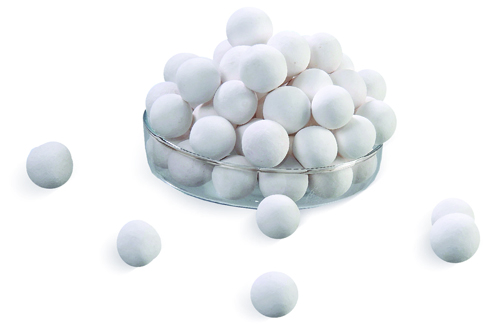
Energy saving and consumption reduction is an essential measure to improve competitive force of China's refractory materials industry, when faced with serious steel market situation.
Energy saving can not only produce tremendous economic benefits, but also generate remarkable social benefits. Energy saving and consumption reduction is an essential measure to improve competitive force of China's refractory materials industry, when faced with serious steel market.

Tabular alumina is aluminum oxide that has been heated to temperatures above 1,650° C (3,000° F). Composed of tablet-like crystals, it has high heat capacity and thermal conductivity as well as exceptional strength and volume stability at high temperatures. For these reasons, a major use of tabular alumina is in the production of high-quality refractories, which consumes large amount of energy. Therefore, consumption reduction is a necessary method to improve competitive force of tabular alumina.
In 1934, tabular alumina was produced in up-draft kiln by Thomas S. Curtis. After that, people started to use tabular alumina in industrial production, namely, refractory materials and lining materials for kilns in ceramic industry. Then Almatis Premium Alumina further developed tabular alumina products and a series of calcined tabular alumina products. The development stage of tabular alumina in China can be divided into four stages: preliminary stage, development stage, production stage, and expanding stage. Following are several methods to save energy and reduce consumption in terms of basic manufacturing process and production equipment of tabular alumina.
Choice of raw materials. Currently, raw materials for tabular alumina production in China are industrial aluminum oxide powder, while Almatis Premium Alumina uses calcined aluminum oxide powder, which is processed under certain high temperature. Compared with industrial aluminum oxide powder, calcined aluminum oxide powder has higher activity and sintering character, thus it can make calcined temperature lower. However, high cost for calcined aluminum oxide powder keeps some tabular alumina manufacturers in China away from it. All matters taken into account, it is more economical to mix them in appropriate proportion to achieve dual purposes. Currently, this method has been taken by some manufacturers and achieved beneficial results.
Improvement in ball milling techniques. Raw materials for tabular alumina need to be processed into fine powder before they become ball shapes. Grit size of raw materials is an important factor that will affect calcined quality. The finer the raw materials, the better the calcined quality.
Make use of afterheat to dry. Semi-manufactured balls needs large amount of water during molding process. They contain 18% to 23% water. So they will be dried before putting into up-draft kiln. After process, the water contained should be lower than 5%.
Improvement in crushing system. Crushing system for tabular alumina is basically barmac, the lining and wear-resistant body of which are wear-resisting iron, resulting in tabular alumina containing too much Fe impurities. Besides that, it is consuming and costly. Some manufacturers start to use ceramic wear-resisting lining bricks and received pleasant effects. Meanwhile, it can reduce Fe impurities content in tabular alumina products.